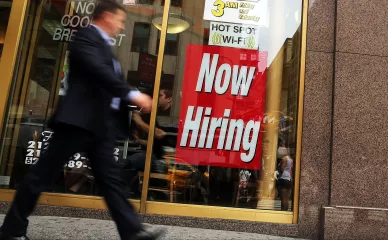- | Government Spending Government Spending
- | Expert Commentary Expert Commentary
- |
A Better Way to Measure Unemployment
My research just released by the Mercatus Center offers a new way to analyze the health of the labor market. The comprehensive jobless rate (CJR) for the first time offers a holistic, all-inclusive estimate of unemployment—it’s the highest unemployment rate that anyone could argue is realistic and valid.
The official statistic, also known as U-3, measures people who are actively looking for a job and are currently available to take one. Other statistics measure the portion of people who have been unemployed for a long time and are still actively seeking work (U-1) or those who used to seek employment but have given up for various reasons (U-4 and U-5).
Another statistic, U-6, adds people who currently work part time but want a full-time job to the U-5 measurement. But by mixing unemployment with underemployment the U-6 muddies the underlying issue of joblessness.
The comprehensive jobless rate cuts through the confusion by offering an overarching measurement that incorporates all other measures of joblessness. It counts all adults and adolescents who say they want a job, regardless of whether they’ve actively looked for work in the last four weeks or if they’re currently available to take a job if one was offered. Because it conceptually fits between the BLS’s U-5 and U-6 statistics, the comprehensive jobless rate could also be called U-5b unemployment statistic.
What does this mean? Well, the labor market has been much better than many pundits have fretted, even during the depths of the Great Recession. Just year and a half ago, President Trump—while on the campaign trail—suggested that the true unemployment rate might be as high as 42 percent. In reality the comprehensive jobless rate was only about 8.5 percent at the time, and the highest it ever reached was 13.4 percent in late 2009. In fact, the CJR is only 3.3 percent higher on average than the BLS’s official unemployment rate. This is not to say that the job market always paints a rosy picture, but it’s also not nearly as apocalyptic as some people have suggested.
Going forward, the comprehensive jobless rate will offer a check on those who would make alarmist claims regarding the health of the labor market, and it offers a complementary statistic that can be used as a reference point for the official unemployment statistics.

